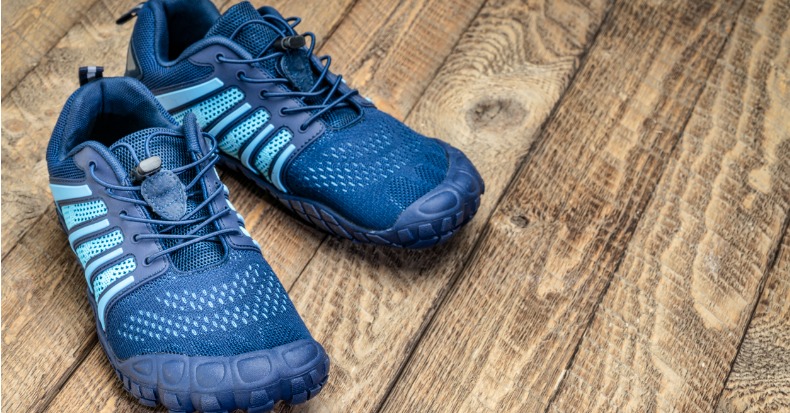While the advice to take 10,000 steps a day stems from a pedometer marketing campaign and did not originate from published research, it’s clear that a more active lifestyle (i.e. more steps per day) is better than a sedentary lifestyle. But what about the shoes we place on our feet when taking those steps? Are there shoe characteristics that may be best for the wearer?
A 2021 study looked at how six different footwear types affect contact force, bending, and torsional hip movements during treadmill use. The six shoe types included a barefoot shoe, an everyday shoe, a sports shoe, a men’s dress shoe, an unstable shoe, and a shoe with a stiffened sole. The investigators observed that the barefoot shoe placed the least load on the hip joint and on the heel. On the other hand, the stiffer and more cushioned the shoe, the more loading heel loading and torsion on the hip.
One might think it is strange that a stiff shoe and/or one with MORE cushioning would result in greater loading at the hip joint. The researchers behind the study speculate that a stiff sole shoe has limited flexibility and therefore transfers greater forces into the body. Cushioning can also hinder the proprioception of the foot sole as well as cause a degree of instability at the time of ground contact that must be compensated for by increased muscular activity. The barefoot shoe had the smallest influence, likely due to the minimal loss of foot/ankle motion and minimal proprioception loss.
A type of footwear that is popular but was not included in the study is the high heeled variety. Studies have shown how wearing heels can alter an individual’s gait, which can increase stress on the knees, hips, and spine. One study that included women between 18 and 79 years of age found that the more years of experience one has wearing heels, the more likely they were to experience mid-back pain, and participants who seldom wore heels were more likely to have foot, leg, and low back pain.
The current research suggests that a minimal or barefoot shoe may be optimal for achieving a more natural, hip-friendly gait. However, for individuals who would prefer a more traditional shoe, a low-profile, flexible sole may be the best fit. Of course, if musculoskeletal pain is keeping you from living a more active lifestyle, contact your doctor of chiropractic and schedule an appointment.




